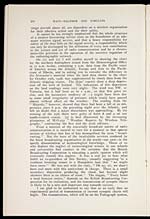Robert Watson-Watt (1892-1973)
Weather and wireless
274
WATT—WEATHER AND WIRELESS
range aircraft above all, are dependent on a wireless organisation
for their effective action and for their safety.
It cannot be too strongly emphasised that the whole structure
of a modern forecasting service rests on the foundation of an ade-
quate wireless signal service, and that a heavy responsibility for
safety of life thus falls on the signal service, a responsibility which
can only be discharged by the utilisation of every new contribution
to the science and art of radio communication and by a chrono-
meter-like precision in the operation of the sensitive organism of
the radiotelegraphic network.
On (1) and (2) I will confine myself to showing the chart
for the northern hemisphere issued from the Meteorological Office
at 11 a.m. to-day, containing 7 a.m. data from the Pacific coast
of America across the Atlantic, Europe and Asia to the Pacific
coast of Siberia, and to asking you to consider the difference in
the forecaster’s material when the land data shown in the chart
for October 19th, 1928, was supplemented by timely data from the
Atlantic shipping routes. The ships’ reports show a deep depres-
sion off the west of Ireland. The indications of this depression
on the land readings were very slight. The wind was SW. at
Valentia, but it had been so at 1 a.m., so that this gave no
clue, and the barometric tendency of — 2 might have been due
to some small irregularity of pressure which would have passed
almost without effect on the weather. The reading from the
“Majestic,” however, showed that there had been a fall of 20 mb.
pressure since 6 p.m. the preceding night over the Atlantic, and
left no doubt that a major disturbance was approaching. By the
evening of the 19th there were gales of force 8 and 9 on our
south-western coasts. (3) is best illustrated by the increasing
plumpness of M.O.252 “Weather Reports by Wireless Tele-
graphy,” contrasting the first and the sixth editions.
From a mention of the essentially-broadcast nature of radio
communication it is natural to turn for a moment to that special
section of wireless that has of late monopolised the term “broad-
casting.” Not the least of the incalculable services rendered by
the finest broadcasting organisation in the world—our own—is the
speedy dissemination of meteorological knowledge. Those of us
who deplore the neglect of meteorological science in our schools
and universities find comfort in the certainty that the British
Broadcasting Corporation is educating a public opinion which will
eventually remedy this neglect. It was a real joy to hear what
befell an ex-president of this Society, casually suggesting to a
roadman breaking stones in a Hampshire lane that “we might
have snow.” He was met with the reply, “Oh no, sir, we shan’t
have real snow with this anticyclone in charge. There is a small
secondary depression producing the cloud, but beyond slight
showers there is no chance of snow.” The slogan, “Every home
a local forecast centre,” depends on the British Broadcasting Cor-
poration for its realisation, and the transmission of synoptic charts
is likely to be a new and important step towards success.
I am glad to be authorised to say that at an early date an
experimental period of transmission of current synoptic charts will
begin. The transmissions, which will be on the Fultograph system,


